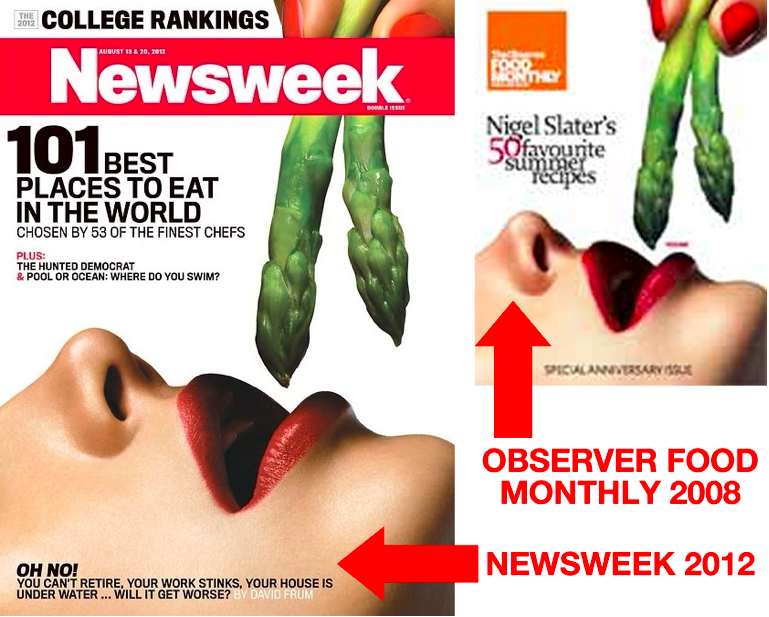I have a new post up at her.meneutics on the tasteless Newsweek cover. Here’s a taste:
The Old Testament book Song of Songs is pretty racy. And not infrequently, its sexual imagery is expressed through food metaphors:
As an apple tree among the trees of the forest,
so is my beloved among the young men.
With great delight I sat in his shadow,
and his fruit was sweet to my taste.
Similarly, a Sumerian poem “The song of the lettuce” (lettuce, believe it or not, was considered an aphrodisiac in the Ancient Near East; when lettuces goes to seed, it shoots up tall and, ahem, releases a milky white sap), is all about, well, eating “the honey man”:
“. . . my lord, the honey man of a goddess, his mother’s favourite, whose hands are honey, whose feet are honey, will make me sweet, whose limbs are honey-sweet, will make me sweet.”
These poets—as well as the writer of Like Water for Chocolate—remind us of the similarities between eating and sex, which are both sites of “bodily interfacing” (a place where a body meets something outside itself) and which are both potentially life-giving and community-forming
A recent Newsweek cover (which appears to have been totally plagiarized from a 2008 issue of the British Observer Food Monthly) depicts a sensual female mouth waiting to receive some very phallic-looking asparagus. It’s not particularly original (nor, I think, tasteful), but as a piece of food porn, it speaks volumes about our culture’s view of women, food, and sex.
At first glance, what bothers me about the image, aside from its crudeness, is the fact that it involves a woman and some vegetables, and not, say, caramel or chocolate cake. As scholar Susan Bordo explained in Unbearable Weight, while it is acceptable for men in advertisements to appear sensually, almost sexually enraptured in food of any kind; for women, things are more complicated: “female hunger as sexuality is represented in Western culture . . . with terror and loathing.” Women, she argues, are often only ‘allowed’ to be sensual with regard to food only if it is diet Jell-O or a Weight Watchers frozen dinner or a vegetable or a dessert in a pre-measured, calorie-controlled portion. So by rendering an image of a woman as passive in the sexualized reception of a vegetable, the cover reflects–rather than challenges–dominant cultural ideas about women’s appetites. Suddenly, it doesn’t seem so daring (if it ever did).
But what do we make of the larger phenomenon of “food porn”—of stylized, close-up, sensual food photography, and its use that, in the words of FoodPornDaily.com, involves a lot of “click, drool, repeat”?
{read the rest at Christianity Today’s women’s blog: here}
















